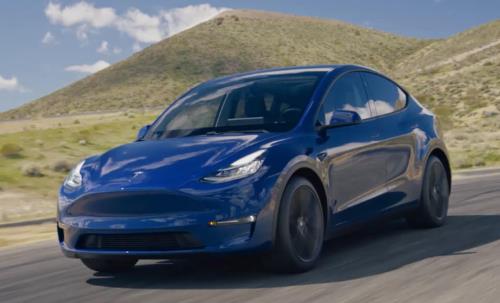Over the years, Elon Musk and his automotive company Tesla have made some bold claims about their cars’ durability and versatility. Claims have included (but are not limited to):
- Teslas can protect you from a bioweapons attack
- Teslas can float well enough to work as boats
- Tesla now has “Autopilot”
- Tesla now has “Full Self-Driving Mode”
- Teslas will have SAE level 5 autonomous technology very soon
- Teslas are good for a million miles
- … and the list goes on.
Most rational people can see these claims for what they are — powerful marketing. Take the bioweapon attack claim. The entire idea isn’t to actually prepare people for chemical or biological warfare, but rather demonstrate just how effective the Tesla air filter is; able even to filter out some of man’s most dangerous and deadly toxins.
The more level-headed sounding claims about Autopilot and the Full Self-Driving upgrade that emerged more recently are also way overblown, especially the arrival of FSD. Despite its well-chosen name (for marketing purposes), the technology is far from fully self-driving. The name suggests SAE level 4-5, but it is in fact still only level 2, the same as the original Autopilot.
Considering all these outlandish and crazy claims, we thought we’d put together a blog where we consider another question that Tesla could one day perhaps add to its marketing spiel — Can a Tesla survive an electromagnetic pulse (EMP) attack? In fact, more broadly speaking, could any EV withstand it?
What is EMP?
EMP or an electromagnetic pulse, also known as a transient electromagnetic disturbance is a sudden and short burst of electromagnetic energy projected over a certain area. Fans of science fiction may be familiar with the concept as they have often been employed as weapons against nanobots and machine-based technology, not to mention potent computer viruses.
This effect is not limited to the world of fiction, however. It’s a very real and dangerous phenomenon that has long been held by people in positions of power and in the military as a true nightmare scenario for a nation’s defense. Imagine a single pulse from a weapon position in space or in the air that in one swoop knocked out every electrical circuit within its range. A series of pulses along the eastern coast of the United States would render the entire seaboard defenseless aside from grunts on the ground, M16 rifles in hand and their own field of vision. No tanks, no planes, no radar, no computers, no radios. Nightmare.
How Are EMP Pulses Caused?

There are many causes of electromagnetic pulses, some occurring in nature, others from civilian/man-made sources, and others military. In nature, EMP is created by lightning, electrostatic discharge, meteoric EMP from a meteoroid colliding with a spacecraft or breaking up in the atmosphere, and a coronal mass ejection; a burst of plasma from the sun’s corona that is released into solar wind.
Man-made pulses can be generated by electric motors, gasoline engine ignition systems, surges in power lines, and others. In the military, there are EMP weapons of a non-nuclear nature that are in development, but the main cause is known to be a nuclear explosion in the planet’s atmosphere. This causes ionization of air molecules by gamma rays generated from the explosion.
Does Protection Exist Against EMP?
The main protection against an EMP attack would be some sort of Faraday cage that would absorb the electromagnetic charge and keep it within the frame of the cage and not pass it on to anything inside the cage. There are also additional kinds of surge protection that exist in data cables, antennae, power cords and other critical electrical infrastructure that can be proofed against EMP attack.
Most EMP protection is reserved exclusively for national defensive purposes. Some devices like microwaves already have small versions of Faraday cages built in and could be used as limited protection for small devices. In the current climate, there isn’t much need for EMP protection except on a broader defensive level. You can expect military installations, ships, planes, tanks and other hardware to be resistant, but who knows how much?
Could a Tesla or Other EV Survive an EMP?

For all our talk further above on the nightmare scenarios of EMP weapons and attacks on the United States, research carried out by the US EMP Commission found quite surprising results in their exhaustive study of cars.
They tested 50 vehicles built between 1987 and 2002, and found that only 3 of them shut down while driving when exposed to EMP, all of which rolled along safely until coming to a stop. Among the 50, only 1 vehicle was rendered disabled and then unable to restart a short time later. Two of the vehicles were able to restart without any issue.
What they found is that older cars, and most likely diesel cars, are the ones that can survive best in an EMP attack. The Commission concluded that in the event of an EMP attack, what would be really dangerous with cars is cars cutting out and then causing crashes on the roads.
That was the good news. The bad news is that the Commission did no research into EVs. Older cars are resilient because they are not overly reliant on computerized technology. An EV is quite a different story.
Conclusion: “EMP Mode” – Tesla’s Next Marketing Campaign?
All things considered, the technology to protect computers and microchips from the devastating effects of electromagnetic pulse radiation does already exist and so there’s no real reason in theory why it couldn’t be fully integrated into electric cars of the future. There is something a little “off” about this consideration, however, and that is a lack of any everyday equivalent.
When Tesla launched bioweapon mode, they were really just upselling the effects of their air filters, which is a real-life everyday concern that people have. EMP generators aren’t exactly something you can pick up at your local Sharper Image, and the main risk comes from the outbreak of nuclear war, a situation which would give us far more to worry about than “will my Tesla still go?”
Therefore, this might be one step that the engineers at Tesla don’t bother taking for the development of their cars. You never know, though. All it would take is one ill-advised Tweet from Elon, and the research floodgates could open!